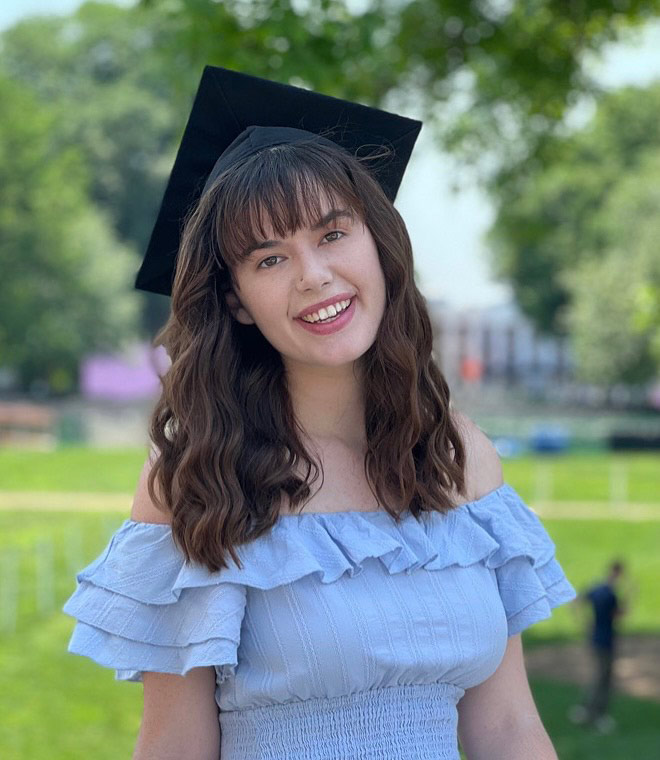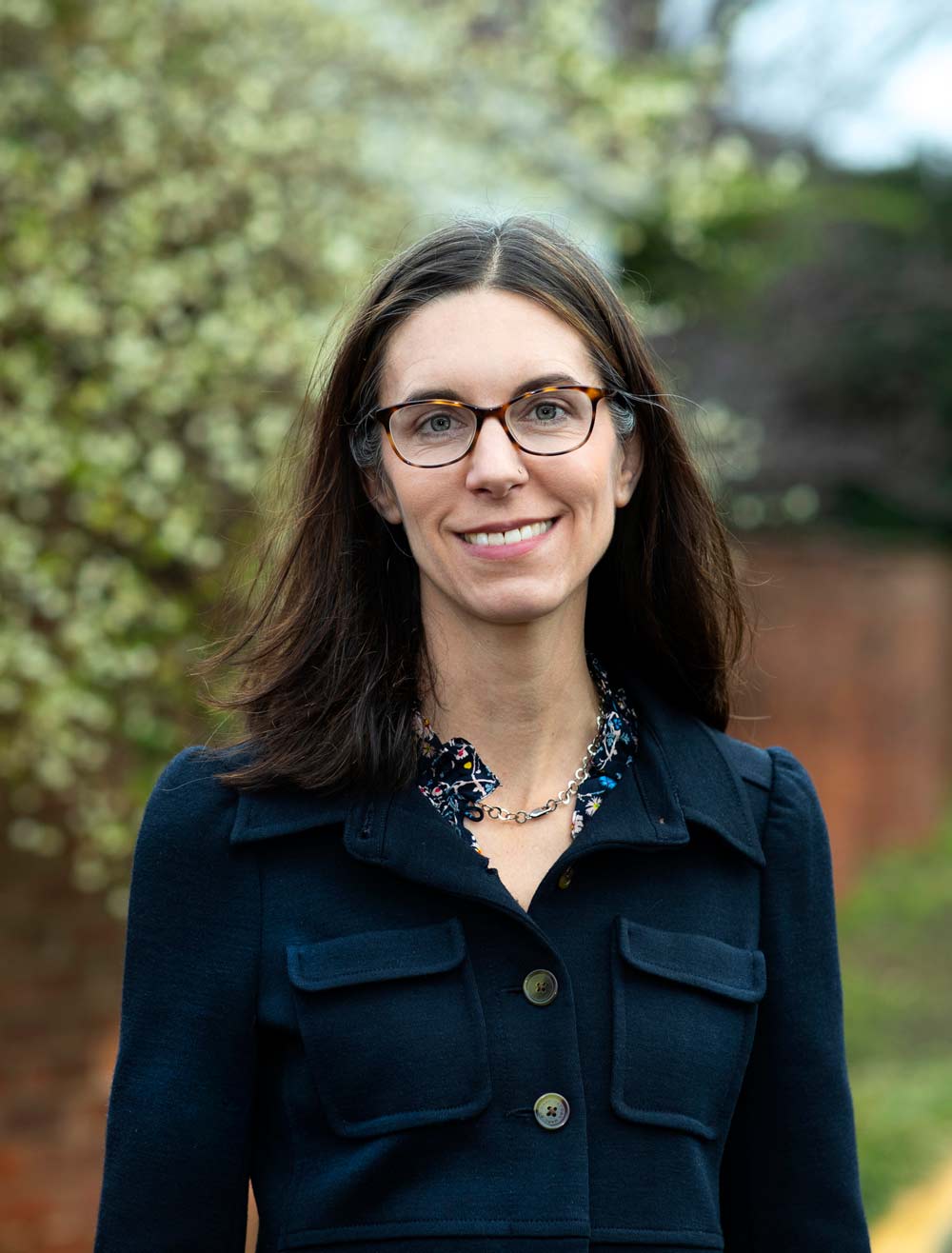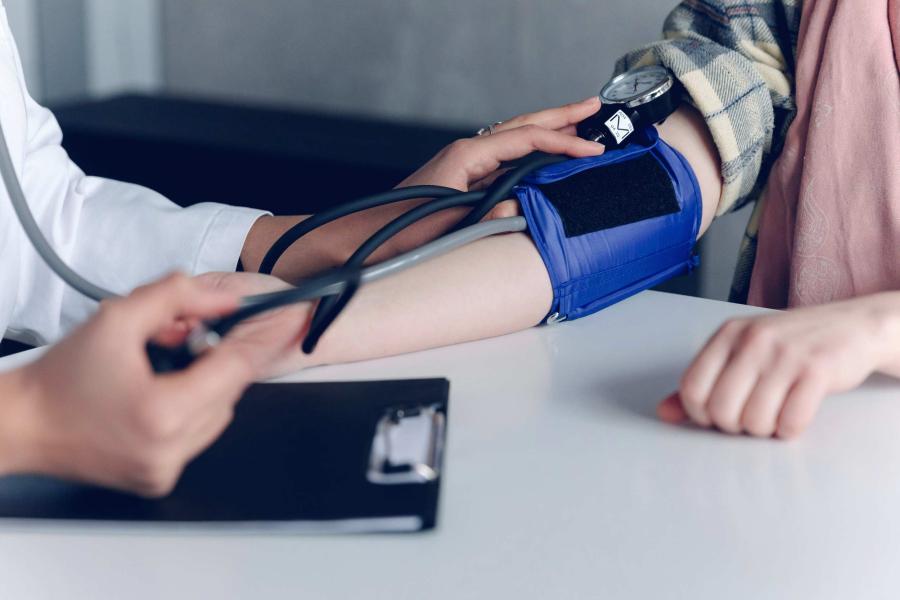A research assistant and a Batten School of Leadership and Public Policy professor published a paper together.
By itself, that’s not remarkable. The University of Virginia is a place full of collaborations between professors and students with brilliant ideas. But this paper, “Eating Disorders Have an Image Problem,” is different. The authors are both survivors.
Professor Lucy Bassett and Batten School alumna Maya Ewart share a powerful bond: They are both eating disorder survivors who want to make a difference. The two met when Ewart was a summer research assistant for Bassett.
Ewart, a double Hoo, was enrolled in Bassett’s course, Feminist Public Policy, when she and her fellow classmates were invited to Bassett’s house for dinner one night.
“I remember it as an intimate evening, it was pouring rain with crazy thunderstorms, and it ended up being this magical moment because we were cozy in my house protected from the wild storm outside,” Bassett said. “Later, during a break from the downpour, a group of students were outside on the porch talking about feminism at UVA. The topic of eating disorders came up and Maya shared that she was a survivor.”
Having struggled with an eating disorder herself, Bassett felt an opportunity to open up. “I had been wanting to write something for a while, and I felt like it was the right time. When Maya shared her story with her classmates that night, I thought, ‘that’s it.’”












